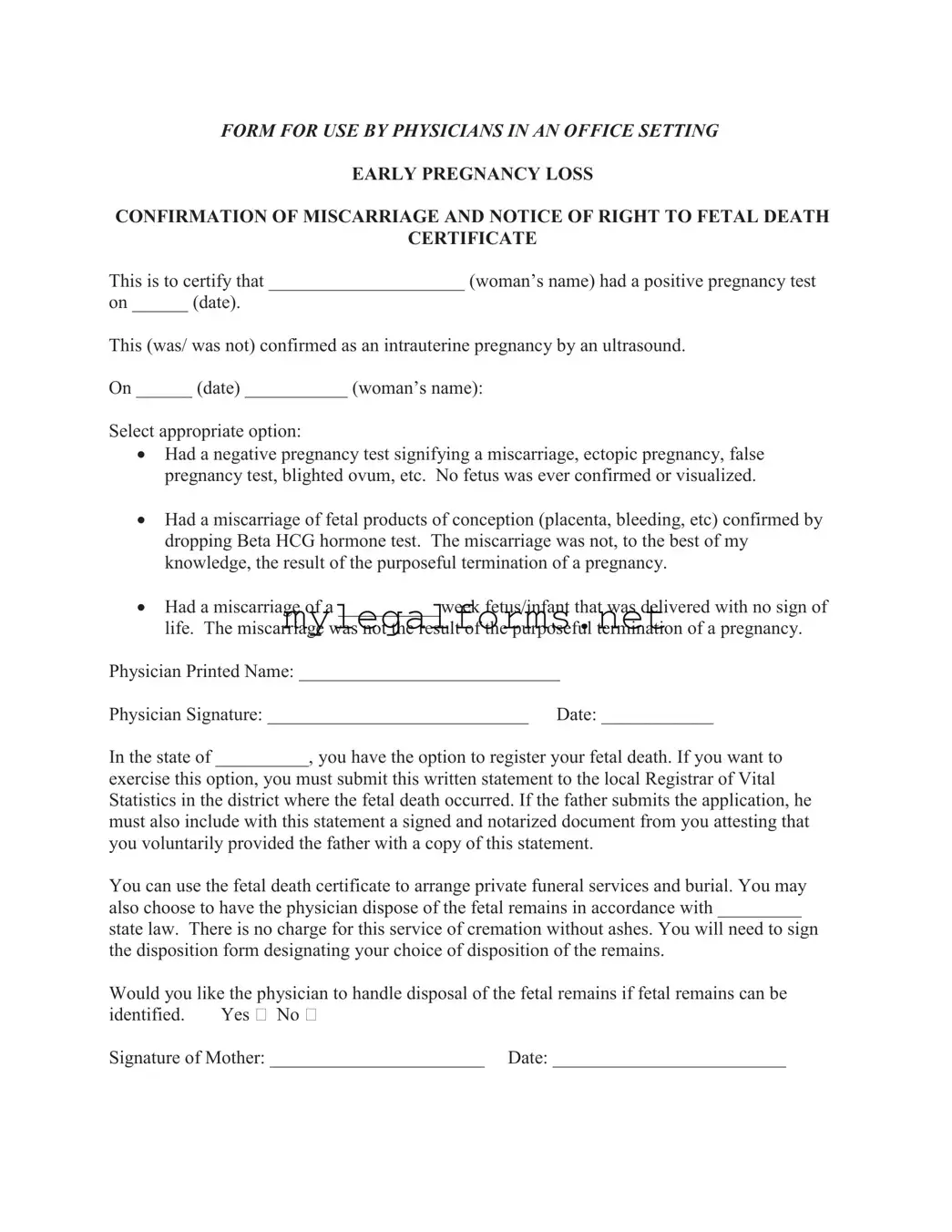FORM FOR USE BY PHYSICIANS IN AN OFFICE SETTING
EARLY PREGNANCY LOSS
CONFIRMATION OF MISCARRIAGE AND NOTICE OF RIGHT TO FETAL DEATH
CERTIFICATE
This is to certify that _____________________ (woman’s name) had a positive pregnancy test
on ______ (date).
This (was/ was not) confirmed as an intrauterine pregnancy by an ultrasound.
On ______ (date) ___________ (woman’s name):
Select appropriate option:
•Had a negative pregnancy test signifying a miscarriage, ectopic pregnancy, false pregnancy test, blighted ovum, etc. No fetus was ever confirmed or visualized.
•Had a miscarriage of fetal products of conception (placenta, bleeding, etc) confirmed by dropping Beta HCG hormone test. The miscarriage was not, to the best of my knowledge, the result of the purposeful termination of a pregnancy.
•Had a miscarriage of a ___________week fetus/infant that was delivered with no sign of life. The miscarriage was not the result of the purposeful termination of a pregnancy.
Physician Printed Name: ____________________________
Physician Signature: ____________________________ Date: ____________
In the state of __________, you have the option to register your fetal death. If you want to
exercise this option, you must submit this written statement to the local Registrar of Vital Statistics in the district where the fetal death occurred. If the father submits the application, he must also include with this statement a signed and notarized document from you attesting that you voluntarily provided the father with a copy of this statement.
You can use the fetal death certificate to arrange private funeral services and burial. You may also choose to have the physician dispose of the fetal remains in accordance with _________
state law. There is no charge for this service of cremation without ashes. You will need to sign the disposition form designating your choice of disposition of the remains.
Would you like the physician to handle disposal of the fetal remains if fetal remains can be identified. Yes No
Signature of Mother: _______________________ Date: _________________________
